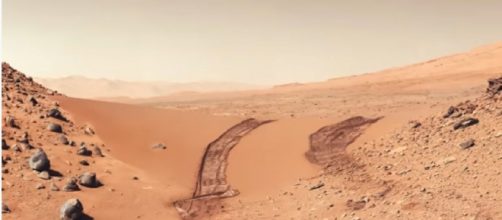Until now, rovers on Mars have transmitted images. The Perseverance rover is the latest to land on the red planet and it is equipped to send back the sounds of Mars. This is a new concept and will add to the charms of NASA's library. The soundtracks will bring planet closure to all those who are busy on various aspects related to colonization of the distant planet. Perseverance rover is on Mars armed with a special camera or SuperCam. It has the ability to record sounds and is right now capturing the popping sound of the instrument as it zaps Martian rocks with its laser.
Perseverance rover, like its predecessors Curiosity and InSight, is an example of how a combination of renewable energy, artificial intelligence, and robotics can make things happen millions of miles away on a distant planet. Curiosity is exploring the terrain. InSight is busy below the surface. Perseverance has joined them to record the sounds on the planet. CNN says the rover is fitted with a whole range of instruments. Some of these have to undergo tests to ensure they are ready for action. However, SuperCam has already passed its test. It has returned the first results that include the sound of it zapping rocks. This will help its instruments to learn more about the composition of the alien rocks.
The team of the American Space Agency NASA will make the best use of the data to understand the planet better.
The SuperCam on Mars will open up new horizons
Perseverance rover houses the SuperCam to capture the sounds on the red planet. It has begun to zap the rocks and it seems the intensity of the sound varies from one rock to another. Researchers could analyze these and form some idea about the possible physical structure of the rocks. A detailed study of the rocks could reveal the presence of material that could benefit the world. That would be a major gain for humans. CNN adds the SuperCam can analyze the geology on Mars in multiple ways. This is because of the sophisticated items installed on the SuperCam.
Their purpose is to identify the materials that make up the rocks and soil. This will help scientists to choose which rock samples would be useful for further study. The agenda of the team is to search for ancient microbial life on Mars. Subsequently, these samples would come to Earth in the 2030s. Mars welcomed Perseverance, the robotic explorer of NASA in February.
Capturing the sounds of Mars
The instrument on the SuperCam can zero in on the tiniest of targets located more than 20 feet away from the rover. Its sensors use sunlight to analyze minerals in rocks and sediment. They have the power to reach down to an atomic and molecular level. Scientists expect to gain a deeper insight into the geological conditions that led to their formation.
The microphone on Perseverance is capturing high-quality sounds. It has sent back three audio files – the first was within 18 hours after landing on Mars. The next audio clip was three days later and relayed the sound of wind on Mars. The third one was on March 2. It was the sound of rocks being zapped. Curiosity had captured images of Mars and Perseverance will capture sound bites.
Perseverance to search for signs of ancient life on Mars
According to ABC News, NASA has taken another step to surge ahead of others in the space race. The agenda of the space agency is to evolve a system for humans to explore the red planet. Perseverance rover is there on Mars and NASA has released new audio recordings from the surface of the distant planet.
This rover is the most sophisticated one of NASA. Its main task is to search for signs of ancient life on the red planet. Mars has a busy time ahead with the UAE, China, and the United States in its skies. While the US has landed its rover, the other two are already in place with missions of their own.


